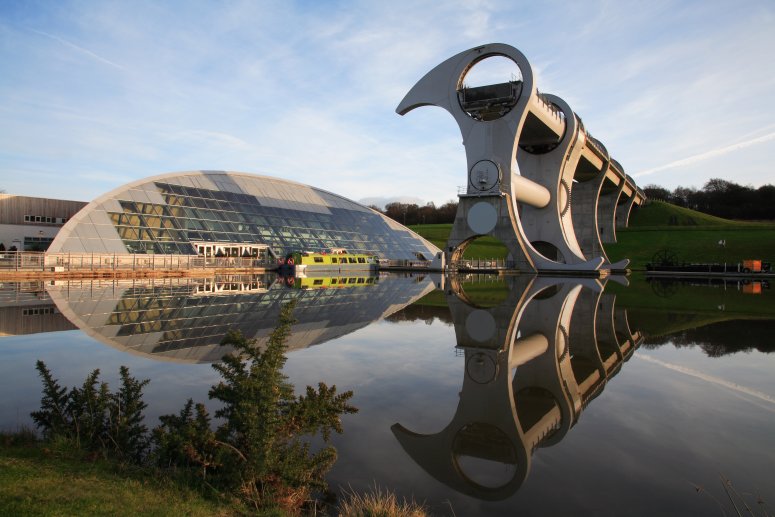Estimated reading time: 3 min
The Falkirk Wheel, perhaps more than any other project, signifies RMJM‘s willingness to push the boundaries of what is possible within design, engineering and architecture. The world’s first – and only – rotating boat lift quickly became one of Scotland’s most iconic structures and visited tourist attractions but it’s conception provided a solution to a near century old problem. The Forth & Clyde and Union canals were originally linked by a staircase of canals which took almost a full day to navigate. Unsurprisingly, these interconnecting canals fell into disuse and were dismantled in 1933. How to reconnect the two historic canals had plagued planners until the mid-90s when an ingenious design solution would change the fate of these waterways and allow Edinburgh and Glasgow to re-connect.
The Falkirk Wheel presented a very real solution, then. But a solution on paper – a theory – is vastly different to a fully functioning 35 metre structure. Constructed, almost like a giant Meccano set, at the Butterley Engineering Steelworks in Derbyshire, the entire structure was then dismantled and transported in 35 lorry loads to Falkirk. A 1,000 strong team then began the arduous task of painstakingly assembling the 1,200 tonne structure to an accuracy of just 10mm to endure the perfect final fit with the 25 metre long axle section aligned to just 1mm.
 The Falkirk Wheel by RMJM
The Falkirk Wheel by RMJM
Boats approaching from the higher Union Canal use a new length of waterway before descending through two locks and finally progressing through a 168 metre tunnel that emerges at the start of the 104 metre aqueduct. This opens directly into the upper of the ‘gondolas’ of the Falkirk Wheel. The wheel rotates and, once descended, the new lower gondola opens out into a 100 metre basin, the landscaping of which masks its origins as an open cast pit. At the end of this basin a final lock lowers boats to the level of the Forth & Clyde Canal. However, it is the rotation itself that still draws gasps from onlookers to this day. With each gondola containing 300 tonnes of water (500,000 litres, enough to fill an Olympic swimming pool), the wheel moves an incredible 600 tonnes on each lift,. The fact that boats displace their own weight of water, though, means that moving them takes up surprisingly power. In fact, the Falkirk Wheel uses only 1.5 kWh of energy to turn, the amount it would take to boil eight household kettles.
The design of the Falkirk Wheel itself has been widely discussed in engineering and design circles. While the structure has been lauded for its civil engineering achievements with a series of award wins, the design has received praise for managing to appear both complex and simple. The hypnotic nature of its movements make it easy to understand its appeal to tourists (over 500,000 people visit it every year). The Royal Fine Art Commission for Scotland described it as “a form of contemporary sculpture” and as artists find new ways to interact with the Falkirk Wheel it’s hard to disagree. The Falkirk Wheel is made great by its design and its remarkable function as well as, increasingly, the idea that this is a timeless feat of engineering, something that simply can’t be improved upon. What makes it unique, though, is the consistent sense of wonder visitors attribute to it, something only truly great design is able to inspire.



One Comment